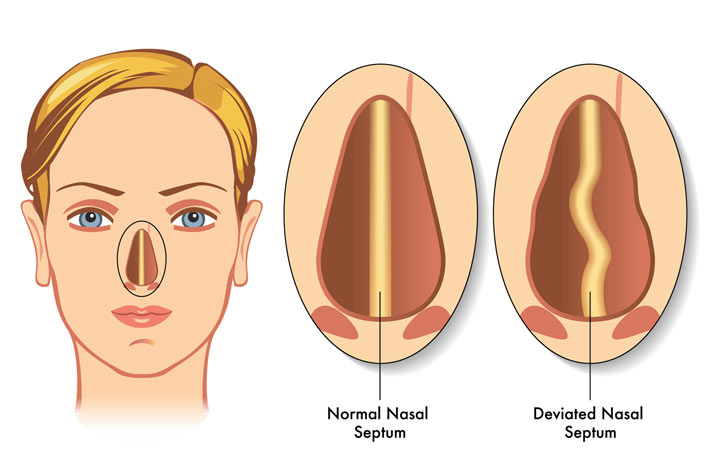Nasal deformities, whether congenital (present from birth) or acquired (developed later due to injury or disease), can significantly impact an individual’s quality of life. These deformities can affect essential functions such as breathing, alter the sense of smell, cause recurring headaches, and even lead to self-consciousness due to the aesthetics of the face.
A key solution to these challenges is septal reconstruction, also known as septoplasty. This intricate surgical procedure is designed to improve the structure and function of the nasal septum, bringing relief and renewed confidence to patients.
Explore further to learn about the intricacies of this transformative procedure.
1. Exploring the Intricacies
Table of Contents
The nasal septum, a thin, rigid structure that neatly separates the two nostrils, plays an absolutely crucial role in maintaining the functionality and overall shape of the nose. It directs airflow and supports the nose. Any deviation, perforation, or damage to this structure can lead to various problems.
These problems may include breathing difficulties, disruptive snoring, sleep apnea, or even unwanted changes in the external appearance of the nose. Thus, any such issues often necessitate a septal repair.
2. Types of Nasal Deformities
Nasal septal surgery is a versatile procedure that can correct a range of nasal deformities. One such deformity is a deviated septum, where the septum is displaced or bent, leading to an obstructed airway and often resulting in breathing difficulties.
Other deformities that can be addressed include a saddle nose, a condition where the bridge of the nose collapses, creating a concave appearance, and cleft defects that occur due to developmental issues.
3. Procedure for Septal Reconstruction
The procedure for the surgery typically involves several precise steps. These include reshaping the cartilage, straightening the deviated septum, and removing any obstructions in the nasal passage. This complex procedure demands a detailed understanding of nasal anatomy, absolute precision, and a personalized approach for each patient.
Surgeons endeavour to preserve as much of the natural septal structure as possible to maintain optimal nasal function and minimize postoperative complications.
4. Recovery and Postoperative Care
Recovery from septal surgery usually takes several weeks. During this time, it’s crucial for patients to follow postoperative instructions carefully to ensure optimal healing and prevent any complications. These instructions often include avoiding strenuous activities, regularly changing nasal dressings, and maintaining good overall health through nutrition and hydration.
Patients can expect some swelling, discomfort, and nasal congestion during recovery, but with proper care, these are typically temporary.
5. Septal Reconstruction with Rhinoplasty

Image source: https://sinusreliefcenter.com/
In some cases, nasal septal surgery is performed in conjunction with rhinoplasty, a surgical procedure designed to change the nose’s shape, size, or proportions for aesthetic reasons. This combined approach is particularly beneficial as it allows for the functional repair of the septum and enhances the overall cosmetic appeal of the nose.
By addressing both functional and aesthetic concerns at once, this comprehensive solution can greatly improve the patient’s breathing capacity while simultaneously addressing any cosmetic concerns.
6. The Impact of Septoplasty on Quality of Life
Successful septoplasty can have a profound positive impact on an individual’s quality of life. Improved breathing can lead to better sleep, increased energy, and enhanced physical performance. Moreover, transforming an aesthetically pleasing nasal structure can significantly enhance self-esteem and positively influence social interactions.
Conclusion
In conclusion, septoplasty plays a significant role in correcting nasal deformities, providing both functional and aesthetic benefits. The procedure, while complex, has a high success rate and can profoundly impact the patient’s quality of life.
Understanding the procedure, its benefits, and potential risks can help individuals make informed decisions about undergoing septal surgery. As medical techniques continue to advance, the success and effectiveness of septal reconstruction are likely to improve even further.
Author Bio: Lisa Alther is a farmer of words in the field of creativity. She is an experienced independent content writer with a demonstrated history of working in the writing and editing industry. She is a multi-niche content chef who loves cooking new things.
- How To Create A Safe And Comfortable Home Environment For In-Home Care In Boca Raton? - July 16, 2024
- 10 Trendy Black Nail Ideas To Elevate Your Nail Game - May 6, 2024
- Getting A Free Divorce In Virginia? Here’s What To Expect - April 24, 2024





No Comments